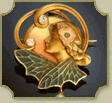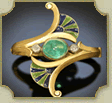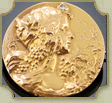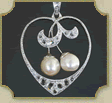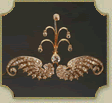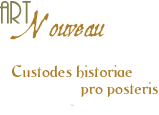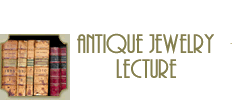antique-jewelry-lecture-hallmarks
Antique jewelry: hallmarks

There are many (hall-)marks you could find on an object, some 19 different sorts in all. The chance of finding them struck all together in one piece is non-existing. Normally there will be between two and five marks on any one piece.
Official hallmarks should not be confused with a markings, which often are just a number such as 750 or 925 (albeit intended to denote the fineness of the metal), which is done by the manufacturer, and unfortunately may not always reflect the true purity of the compound metal
These marks could give you information about:
- the year the article is made in
- the time or period when the piece is made
- the maker
- the alloy (there can be more then one sort of precious metal in a piece and therefor more of these marks can be found in one article)
- the seller
- the essay-master
- the designer
- the country where the piece was made
- the province or state where the piece was made
- the city where the piece was made
- the city where the piece was hall-marked
- the weight
- the tax or duty that might have been payed for it (like luxury or war tax)
- the importer of the piece to a certain country
- the import into a country
- the import into a city
- the export from a country
- the jubilee year in which the piece is made
- the reigning monarch
It is also possible that apart from these bits of information per (hall-)mark there can be marks with more then 1 type of information. Take for instance the multi-function of one particular French hallmark, the eagle's head. First of all this shows the country it was made, then the alloy of the piece (750/1000) and the way it is struck into the piece plus the location of the mark, as well as the amount of marks struck can give the expert an indication of its weight. And last but not least an indictation of the time frame the piece was hallmarked (and thus most probably made).
Another example of a so-called double function of a mark can be found in Holland in the 18th century; in Groningen (northern part of the Netherlands) it was common (for silverware) to strike the makers mark and the city mark doubled in a cross to show the alloy of the piece.
hallmarks (dutch)
hallmarks (french)
 France hallmark ant |
 France hallmark dog's head |
 France hallmark eagle's head |
 France hallmark horse's head |
 France hallmark owl |
The following is from: An Illustrated Dictionary of Jewelry, autor: Harold Newman, publishers: Thames and Hudson
Hallmarks
The mark(s) stamped on some articles of gold or silver in Great Britain and some Continental countries (but not officially in the United States) to attest the purity of the metal, in compliance with legally established standards, and other relevant data. Some such marks are required for jewelry except exempted articles, e.g. small pieces or delicate work that would be damaged.
The hallmarks in Great Britain include the: 'Maker's mark', stamped by the maker before the piece is submitted for assaying; 'Assay Office mark', to indicate the office that does assaying; 'Standard mark', to attest the purity of the metal; and 'Date letter', to show the date of assaying. Marks less often used include a 'foreign goods mark' (to show date of importation), 'duty mark' (formerly used, to show payment of import duty), and 'commemorative mark' (used seldom, during the period of some special event). A 'Design Registration mark' indicates the registration of a design (the date of registration, not the date of manufacture).
Hallmarks were introduced in England in 1300 by Edward I, and the various marks gradually evolved. The standard hallmark in London is affixed at Goldsmiths' Hall (hence the term 'hallmark') of the Worshipful company of Goldsmiths, organized as a guild before 1180, which maintains a record of all hallmarks. Booklets of hallmarks can be obtained from most jewellers.
